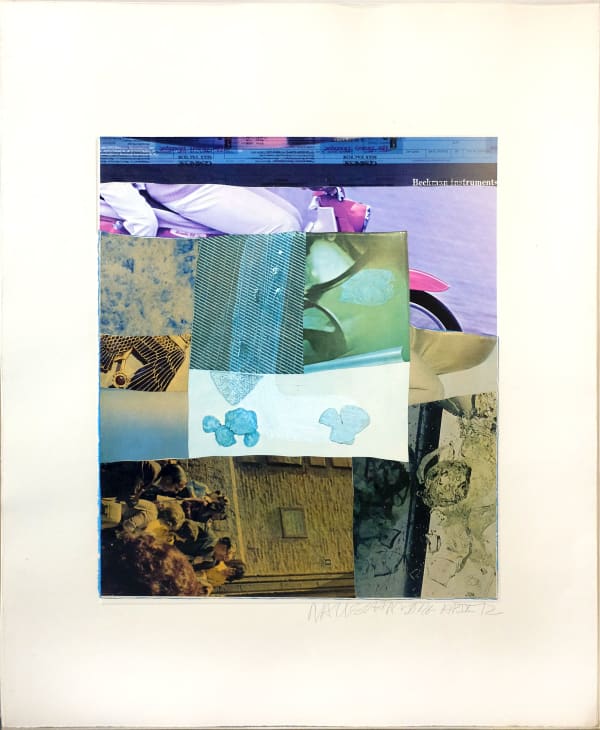-
Robert RauschenbergCartel Anunciador (Edition of 10), 1988offset on aluminum35 x 23 inSold
88.9 x 58.42 cmView more details -
 Robert RauschenbergPoster for ROCI CUBA, Casa de las Americas, 1988Offset lithograph and screen print on foil-coated paper35 x 23 inSold
Robert RauschenbergPoster for ROCI CUBA, Casa de las Americas, 1988Offset lithograph and screen print on foil-coated paper35 x 23 inSold
88.9 x 58.42 cmView more details -
 Robert RauschenbergRomances (Pomegranate), from Romances, 1977Lithograph in colors HMP Koller handmade paper41 3/4 x 31 1/2 inSold
Robert RauschenbergRomances (Pomegranate), from Romances, 1977Lithograph in colors HMP Koller handmade paper41 3/4 x 31 1/2 inSold
106 x 80 cmView more details -
 Robert RauschenbergHorsefeathers Thirteen - II, 1972Lithograph, color offset, pochoir, collage and embossing on paper
Robert RauschenbergHorsefeathers Thirteen - II, 1972Lithograph, color offset, pochoir, collage and embossing on paper
27.75 x 22.50 in
70.48 x 57.15 cmAP IX, Edition of 73$ 4,000.00 SoldView more details -
Robert RauschenbergPlus Fours (1976)Mixed Media67 x 95 inSold
170.18 x 241.3 cmView more details
Robert Rauschenberg’s art has always been one of thoughtful inclusion. Working in a wide range of subjects, styles, materials, and techniques, Rauschenberg has been called a forerunner of essentially every postwar movement since Abstract Expressionism.
He remained, however, independent of any particular affiliation. At the time that he began making art in the late 1940s and early 1950s, his belief that “painting relates to both art and life” presented a direct challenge to the prevalent modernist aesthetic.
The celebrated Combines, begun in the mid-1950s, brought real-world images and objects into the realm of abstract painting and countered sanctioned divisions between painting and sculpture. These works established the artist’s ongoing dialogue between mediums, between the handmade and the readymade, and between the gestural brushstroke and the mechanically reproduced image. Rauschenberg’s lifelong commitment to collaboration—with performers, printmakers, engineers, writers, artists, and artisans from around the world—is a further manifestation of his expansive artistic philosophy.
This text and the following chapter texts are adapted from an essay written by Julia Blaut, “Robert Rauschenberg: A Retrospective,” @Guggenheim (Fall 1997).




